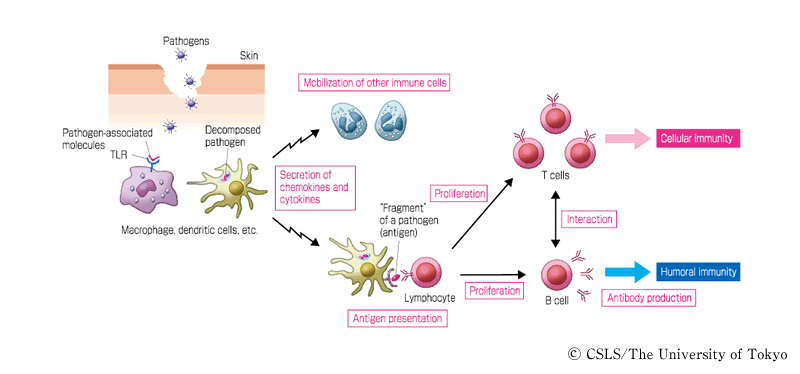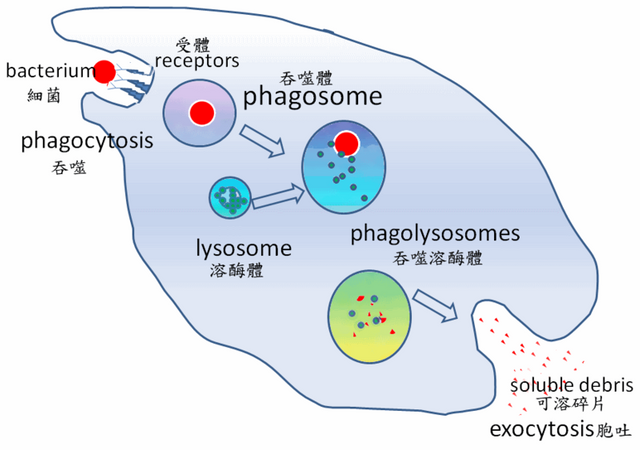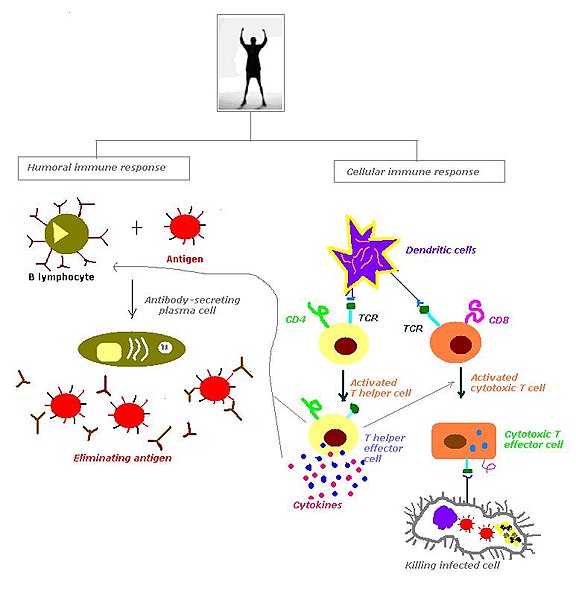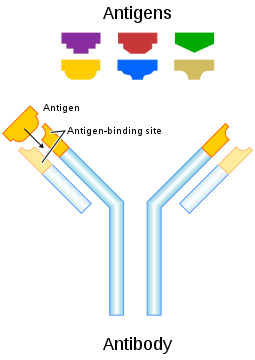IMMUNOCHEMISTRY IN HUMAN SURVIVAL #1
Introduction
The human body can be compared to a country with a good military system. Aside from having a good military system; most cities (in a country) decades ago built boundary walls that acted as barriers, hence preventing invaders from entering.
Nevertheless, sometimes these walls are unable to keep invaders out completely. In a situation like this, armed forces could be mobilized from different regions in the country to counter attacks from invaders in the affected city.
As we all know, the military system is made up of different groups, ranging from the police, custom service, army, air force, navy, etc. Their mode of operations differ one from another. For example, while police arrest suspects on land; custom service prevent invaders from smuggling into the city through seaport or airport.
Though the various groups perform different functions; however, in this context the major role of the military system is to fight against invaders.
Comparing the body's immune system to the military system
Similar manner, the human body constantly drifts through an 'ocean' of pathogens. For example, microbes try entering the body through consumption of contaminated food, or as a result of exposure to communicable diseases.
But just like the city walls hinder entry of invaders, the human body has a mechanical-chemical barrier too. 'Mechanical' in the sense that the skin act as the barrier to pathogens, while 'chemical' shows the involvement of sweat, tears, urine, mucus secretion, proteolytic enzymes, and stomach pH, in stopping entry of pathogens.
However, even the city walls are sometimes breached by invaders. Likewise; most microbes invade and break through the mechanical-chemical barrier due to injury sustained in the skin.

Pathogens breaking through the mechanical-chemical barrier (License: Public Domain]: © CSLS/University of Tokyo
Once the mechanical-chemical barrier is breached, the pathogens are followed immediately by a specially designed defense system (comprised of biological structures) that helps to detect a wide variety of pathogens. This defense system is also known as the immune system.
How does the immune system fight against pathogens?
In combating pathogens from triggering infection, the immune system respond to invasion of pathogens in two major ways: The natural immune response and adaptive immune response
Mechanism of action of the natural immune response
Like I said earlier, the human body is designed in such a unique way that despite the fact that pathogens most times breach through the mechanical-chemical barrier; before these pathogens could produce an infection, they have to pass through different stages. However, the natural immune response from the immune system is capable of blocking most of these stages, hence stopping infection from occurring.
The natural immune response is also known as the innate immunity. It is an inborn immune system that only provides immediate defense against infection. Source
It might interest you to know that, the natural immune response can only block these infection-triggering stages through four (4) spectacular ways:
- Recruiting immune cells to the site of infection:
This is quite similar to the way a country's military system act against invaders. For example, once there's a minor invasion, the police force are alerted. Suspects are surrounded, arrested, and imprisoned.
In the case of natural immune response, what happens after the mechanical-chemical barrier has been destroyed is that dendritic cells perceive the invasion of pathogens and emit danger signals.
The danger signals they emit are proteins such as inflammatory cytokines. Just as the name implies, cytokines cause inflammation (a condition resulting in swollen skin) due to their ability to stimulate thermoregulatory centers responsible for increasing body temperature.
At this point, a very important question anyone would love to ask is, how does inflammation help in stopping pathogens?.
Actually, what happens is that when the cytokines are released by dendritic cells, they go straight to the sites of infection and surround or 'arrest' the pathogens. It's the swelling that help keep the pathogen from escaping. Once the pathogens are 'imprisoned', macrophages mobilize neutrophils that are capable of destroying the pathogens completely.
Neutrophils are present in bloodstream, and they are one of the first-responder of inflammatory cells to migrate to the site of inflammation. Source
ii. Identification of foreign substances:
What makes recruiting immune cells to the site of infection possible is that, dendritic cells and macrophages have Toll-Like Receptor (TLR) that identifies the presence of any foreign substance in the body. Thus, with the help of the TLR, pathogens can be identified.
TLR are recognition molecules, and there help the cells to identify pathogens. For more information on TLR, you can read Here
iii. Promoting removal of pathogens through phagocytosis:
 Removal of an invading bacterium through phagocytosis (License: CC BY-SA 3.0, Author: GrahamColm]: Wiki Commons
Removal of an invading bacterium through phagocytosis (License: CC BY-SA 3.0, Author: GrahamColm]: Wiki CommonsJust like invaders are captured by a country's military system once they are identified; phagocytes also capture pathogens. Thereafter, enzymes in the intracellular portion of the phagocytes help destroy these pathogens. For example, the enzyme that destroys an invading bacteria that has been picked up by phagocytes is the myeloperoxidase.
Also, in order to enhance the efficiency of the natural immune response in pathogen clearance, the body makes provision for a substance known as opsonin
Opsonin aid the immune system by chemically modifying pathogens (that is making them more delicious) to cell surface receptors on phagocytes and NK (natural killer) cells. Source
iv. Activation of the adaptive immune system:
In the military system, if a situation in a country cannot be solved by a particular group, a more stronger group is mobilized. Inability of the natural immune response to eradicate pathogens with the three (3) ways mentioned above will trigger it to alert the adaptive immunity through antigen-presentation process.
In immunology, the term antigen is most times used in place of pathogen. However, it could be seen as a part of an invadding microbe, host healthy tissue, or dead cells. Source
Antigen presentation can be seen as the process whereby the cells responsible for natural immune response make foreign substances or pathogens accessible to lymphocytes (cells of the adaptive immunity) in order to completely eradicate these pathogens from the body.
Mechanism of action of the adaptive immune response
It takes about 96 to 120 hours after the failure of the innate immunity to curb an infection for the adaptive immunity to start its action. Source
Unlike the innate immune response, the adaptive immune response provides a long-lasting protection. Like I said earlier, the lymphocytes (B and T lymphocytes) are the cells that are involved in adaptive immunity. Also, the kind of pathogens the body tries to eliminate will determine the mode of action of these lymphocytes.
Both the B lymphocytes and T lymphocytes are derived from the bone marrow cells. They also determine the two (2) types of adaptive immune response. The T lymphocytes are responsible for the cellular immune response, while B lymphocytes are responsible for the humoral immune response
 The adaptive immunity (License: CC BY-SA 3.0, Author: Tinastella]: Wiki Commons
The adaptive immunity (License: CC BY-SA 3.0, Author: Tinastella]: Wiki CommonsFor the cellular immune response, the T lymphocytes defend the body against malignant cells and viruses. While B lymphocytes help synthesize antibodies that bind antigens (parts of pathogens) that were presented by the cells involved in natural immune response.
Antibody (Ab) also known as an immunoglobulin (Ig), is a large, Y-shaped protein produced mainly by plasma cells (B lymphocytes) that is used by the immune system to neutralize pathogens Source
 (License: CC BY-SA 3.0, Author: Fvasconcellos]: Wiki Commons
(License: CC BY-SA 3.0, Author: Fvasconcellos]: Wiki CommonsThe adaptive immune response is seen as a specific immune response owing to the fact that each pathogen have different *epitope (antigenic determinants) that can only bind to a corresponding paratope (antigen-binding site) on the antibody in a 'lock and key' manner.
The unique thing about the specificity of adaptive immunological reaction is that; no matter the number of pathogens present in the body, each antigen epitope will bind to a specific antibody paratope that is different from the rest.
It's worthy of note that the adaptive immune response is also conferred with immunological memory. The first immunological response that is produced as a result of the presence of foreign structures is known as the primary response.
After the first encounter with a pathogen or antigen, the immune system remains memory lymphocytes for each of the antigen epitopes. The remains of memory lymphocytes stimulates the production of many clones of specific lymphocytes against this particular epitope (secondary response) Source
This is why in the military system, once a suspected invader tries reentering the country, he or she can easily be captured. It is worthy of note that, the secondary response is faster and more effective than the primary response.
Immunological memory is the basis of vaccination. That is why people that were once affected with diseases such as measles, small pox etc, do not experience them again in their entire life time after the initial infection has been treated with vaccines.
Summary
In conclusion, despite the fact that the immune system has two major subsystems that combat pathogens; their immunological reactions are still similar in the sense that they must recognize self from nonself. Self in this context are host healthy tissues, while nonself are the pathogens or foreign substances in the body.
To avoid mounting attacks against the host organism; during embryonic stage, the lymphocytes that recognizes their self structures are eliminated (by means of apoptosis process), making way for clone cells that react against foreign structures Source
Destruction of the lymphocytes that react against self structures in the early stage of life paves way for the emergence of lymphocytes that only destroy foreign structures in the body. This is how immunochemistry has helped humanity survive the daily war with pathogens.
In the next series, we'll look at the reasons why the immune system, though very vital, sometimes do not perform its function. I hope you found this enlightening?. Thanks for doing this with me.
References
Immune system. Wikipedia articles
(accessed on May, 11th, 2018)
Berg, J., Tymoczko, J. and Stryer, L. (2002). Biochemistry, (5th Edition). New York : W H Freeman, pp. 1338-1342.
Chatterjea, M. N. (2012). Textbook of Medical Biochemistry, (8th Edition). New Delhi: Jaypee Brothers Medical Publishers, pp. 110 - 115.
Vasudevan et al., (2011). Textbook of Biochemistry, (6th Edition). New Delhi: Jaypee Brothers Medical Publishers, pp. 553-554.
Image Sources
Images are from wikicommons licensed under creative commons and eligible for commercial use.
I'm a proud member of the steemstem community which promotes quality posts in the science, technology, engineering and mathematics fields on the steem blockchain mainly through interaction and engagement. Feel free to join us on discord here